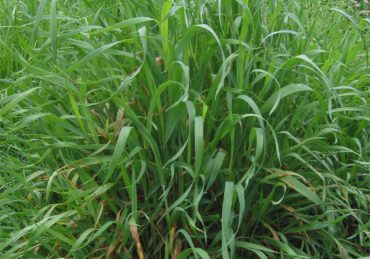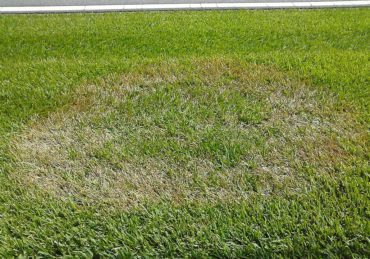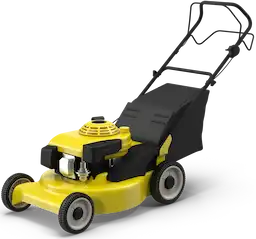To revive a dead lawn, begin by evaluating whether the grass is dormant or genuinely dead using the tug and crown tests. Next, improve soil health by removing debris and thatch and aerating the ground. Choose compatible grass seed, considering your climate and soil conditions. Water deeply and consistently, aiming for about 1 to 1.5 inches weekly. Fertilize appropriately, focusing on nutrient deficiencies identified through soil tests. Regular inspections for pests and diseases are vital. Finally, maintain your lawn with proper mowing and ongoing care. Continue to investigate these essential steps for a thriving, green lawn.
Grass is Dormant or Dead?
Understanding whether your grass is dormant or dead is essential for effective lawn revival.
Signs of dormancy, such as browning without easy removal of blades, can often be mistaken for death, which requires different restoration efforts.
Dormant Grass How to Bring It Back to Life
Determining whether grass is dormant or dead is essential for deciding the appropriate revival strategy, as healthy dormant grass can recover with proper care, while dead grass necessitates reseeding or replacement.
Early identification is important; dormant grass often appears brown, especially in cool-season varieties during summer, but can revive with adequate warmth and water.
The Tug Test is a practical method for evaluating grass health: healthy roots will resist pulling, whereas easy removal indicates death.
Furthermore, examining the soil and crown can reveal the grass’s condition—healthy crowns should be whitish and sturdy.
Is Your Grass Beyond Repair? Signs of a Dead Lawn
How can you distinguish between dormant grass that can be revived and dead grass that requires replacement?
Evaluating your lawn begins with the Tug Test; if the grass pulls out easily, it indicates that the grass is dead. Furthermore, observe for well-defined patches of brown grass, which often signal dead areas, while uniformly brown grass may suggest dormancy.
Conducting the Crown Test can further clarify grass health; healthy crowns appear sturdy and whitish, while brown or mushy crowns indicate death.
Drought stress signs, such as wilting, also hint at potential lawn problems.
Step One Evaluate the Current State of Your Lawn
Begin by evaluating the condition of your lawn through various tests to distinguish between dormant and dead grass.
Conduct the Tug Test; if grass blades pull out easily, it indicates dead grass, while resistance suggests healthy grass.
The Crown Test is also essential—examine the crowns for firmness and color; healthy crowns appear whitish, while brown or mushy ones indicate death.
Look for signs of drought stress, such as defined brown patches, to differentiate between dead and potentially dormant areas.
Furthermore, inspect the overall lawn for uniform browning, typical of dormancy.
Cleaning and Conditioning the Soil
To effectively prepare your lawn for revival, it is vital to begin with the removal of debris and thatch, as this promotes better sunlight and air circulation.
Next, aeration is essential for alleviating soil compaction, allowing water and nutrients to penetrate more effectively.
Clearing Out Debris and Thatch
Clearing out debris and thatch is essential for preparing your lawn, as accumulated organic matter can inhibit grass growth by blocking sunlight and restricting essential nutrients from penetrating the soil.
Begin by removing any debris, such as leaves, twigs, and lawn clippings, which can smother grass and hinder its recovery.
Dethatching is also vital; excessive thatch buildup, over 1/2 inch, can prevent water, nutrients, and air from reaching the soil. Use a rake with short tines or a dethatching machine to efficiently break up and remove thatch.
After this process, aerating the lawn will further enhance soil conditions, allowing for improved oxygen flow and nutrient absorption.
Regular maintenance lays the groundwork for revitalized grass health.
Aeration Breathing New Life Into Compacted Soil
Aeration serves as a crucial process for enhancing soil conditions, as it allows important air, water, and nutrients to penetrate compacted ground, thereby promoting healthier root growth and overall grass vigor.
This technique involves perforating the soil with holes, which alleviates compaction and improves soil health.
Suitable timing for aeration varies: cool-season grasses benefit from early spring or fall, while warm-season grasses thrive with aeration in late spring or early summer.
Following aeration, overseeding is recommended to fill in bare patches and improve grass density, utilizing the holes as an excellent seedbed.
Regular aeration every 1-3 years is essential for maintaining ideal soil health, ensuring a robust lawn that resists future issues.
Seeding the Bare Spots Choosing the Right Grass for Your Lawn
Choosing the right grass seed for bare spots is vital for achieving a cohesive and healthy lawn that thrives under specific environmental conditions.
Begin by identifying the existing grass type in your lawn, as compatibility is significant; cool-season grasses are ideal for northern climates, while warm-season varieties suit southern regions.
Conduct soil test results to assess pH and nutrient levels, which can guide your selection of grass seeds with appropriate requirements.
Opt for drought-resistant blends that include both fast germinating and slower maturing varieties to guarantee quick coverage and sustained growth.
Moreover, prioritize high-quality seeds treated for disease resistance, enhancing the chances of establishing a robust lawn and minimizing pest issues, especially when addressing patches left by dormant grass.
Hydration for Recovery Watering Techniques to Revive Dead Grass
To effectively revive a dead lawn, implementing proper hydration techniques is essential for promoting healthy growth and recovery.
Aim to apply 1 to 1.5 inches of water weekly, adjusting for rainfall, to guarantee moisture penetrates the soil adequately.
Water deeply to a depth of 6-8 inches to support strong root development and enhance drought resilience.
A consistent watering schedule, ideally once or twice a week during early morning hours, minimizes evaporation and reduces the risk of fungal diseases.
In the initial stages of revitalization, especially for newly overseeded areas, increase watering frequency to twice daily to maintain consistent moisture until germination occurs.
Consult a professional lawn care service for tailored advice to effectively revive your lawn.
How to Keep a Healthy Lawn After Reviving Dead Spots
Nourishing your lawn with the right fertilizers is a critical step in revitalizing grass that has suffered from stress or damage. Conducting a soil test is vital to identify any nutrient deficiencies that may hinder grass recovery.
Fertilizers rich in phosphorus promote robust root development, while nitrogen-heavy formulas support recovery from foliar damage. It is advisable to apply fertilizers at a rate not exceeding 1 pound of nitrogen per 1,000 square feet to avoid over-fertilization, which can harm your lawn.
Regular applications of slow-release fertilizers during the growing season will enhance nutrient availability, resulting in a healthier lawn. Timing your applications in early spring and late summer guarantees that your grass receives peak nourishment during its peak growth periods.
Managing Pests and Lawn Diseases
Effective management of pests and lawn diseases is essential for maintaining a healthy and vibrant lawn.
Regularly inspect your grass for signs of pests such as grubs and chinch bugs, which can create brown patches by damaging roots. Identifying lawn diseases is equally important; discolored patches may indicate fungal infections that require aeration and dethatching to improve airflow.
Implementing integrated pest management (IPM) strategies can help mitigate these issues by promoting beneficial insects and maintaining healthy soil, reducing the need for chemical treatments.
Tailoring pest control methods to specific grass types and regional conditions can optimize effectiveness. Consulting local lawn care professionals can provide valuable insights into managing pests and diseases, ensuring your lawn remains resilient and thriving.
Keeping It Green Maintenance Tips After Lawn Revival
Maintaining a revived lawn requires diligent attention to mowing and ongoing care practices.
Proper mowing techniques, including maintaining the appropriate grass height, greatly contribute to lawn density and health.
Furthermore, implementing regular lawn care measures can effectively prevent potential issues, ensuring your grass remains lush and vibrant.
Proper Mowing Practices for Growing Grass
Proper mowing practices play an essential role in promoting healthy grass growth and ensuring the long-term vigor of your revived lawn.
Maintaining a grass height of 2.5 to 4 inches, depending on the type, is vital for encouraging healthy growth while minimizing stress on the plants.
Avoid mowing wet grass to prevent uneven cuts and potential disease.
Moreover, changing your mowing pattern regularly helps reduce soil compaction and enhances air circulation.
It is important to keep mower blades sharp for clean cuts, as dull blades can damage grass blades, increasing stress and disease susceptibility.
Regular Lawn Care Preventative Measures for Future Issues
To keep your lawn vibrant and healthy after revival, implementing a consistent maintenance routine is crucial for preventing future issues.
Regular lawn care practices should include mowing at a height of 2.5 to 4 inches, promoting deep root growth and minimizing weed competition.
It is essential to water your lawn adequately, applying approximately 1 inch of water weekly to guarantee hydration and resilience against drought.
Furthermore, aerating your lawn annually helps alleviate soil compaction, improving water infiltration and nutrient absorption.
Fertilizing with a slow-release nitrogen fertilizer in early spring and late summer further supports healthy growth.
When to Call in Lawn Care Experts for Dead or Brown Grass Issues
Recognizing when to seek assistance from lawn care experts can be crucial in effectively restoring a struggling lawn. If persistent brown patches or bare spots remain despite your best efforts, professional lawn care may be necessary.
Experts can conduct soil tests to identify pH imbalances and nutrient deficiencies, which are often at the root of lawn deterioration. Furthermore, if you suspect pest infestations or fungal diseases, specialists can accurately diagnose the issue and recommend appropriate treatment plans.
Utilizing advanced tools and techniques for aeration, dethatching, and overseeding, they can greatly enhance your lawn’s revival. In addition, regular lawn maintenance plans offered by these professionals can help prevent future issues, ensuring the long-term health and resilience of your lawn.
Frequently Asked Questions
How Do I Bring My Dead Grass Back to Life?
To restore dead grass, first assess its condition. If dormant, guarantee adequate watering and warmth. For dead areas, consider aeration and reseeding. Consistent maintenance practices, including fertilization, will prevent future lawn issues.
What is the Fastest Way to Fix Dead or Dying Grass?
The fastest way to fix dead grass involves removing dead patches, overseeding with suitable grass seed, ensuring proper soil preparation, and maintaining consistent moisture levels to promote rapid germination and growth for revitalization.
Can Grass Grow Back After It Dies?
Grass cannot grow back once it has died; however, if the grass is merely dormant, appropriate care such as watering and fertilization can facilitate its recovery, depending on the grass type and environmental conditions.
How to Rejuvenate Your Lawn?
To rejuvenate your lawn, assess its condition, aerate, and dethatch to improve soil health. Implement a consistent watering schedule, apply balanced fertilizers, and consider overseeding to enhance density and promote vigorous growth.





